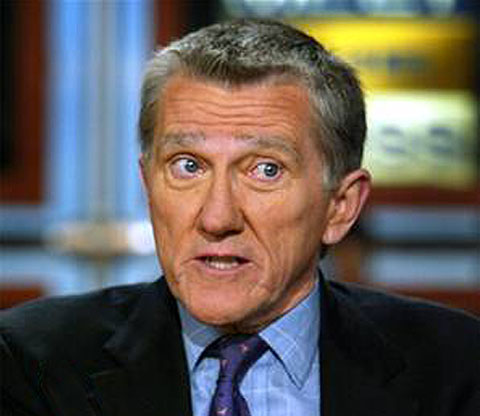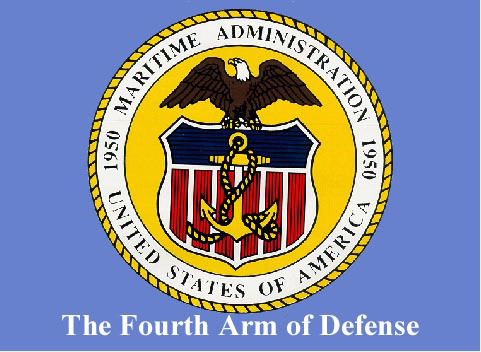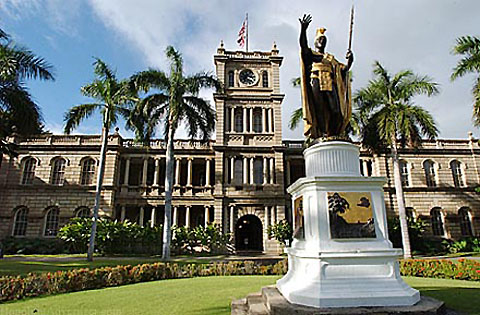www.islandbreath.org ID#0709-29
SUBJECT: MILITARY USE OF SUPERFERRY
SOURCE: KEN TAYLOR kkajihiro@afsc.org
POSTED: 8 SEPTMEBER 2007 - 8:00am HST
Lehman joins Superferry in March 2005

image above: John Lehman on NBC's "Meet the Press"
[Editor's Note: The following is an exerpt from an article in Pacific Business Journal that reveals the the truth about the continued denial by the Superferry Corporation that the military has not been a part of the planned use of the Superferry from the point that John Lehman became involved.] 28 March 2005 in Pacific Business Journal ...Lehman's private equity firm J.F. Lehman & Co. will invest $58 million equity capital in the interisland ferry project. His company invests primarily in marine and aerospace defense projects... With Lehman's expertise, the Superferry plans to operate a Westpac Express, essentially to carry military equipment and ferry vehicles from Oahu to the Big Island on a daily basis. For the complete article click below: |
SUBJECT: MILITARY USE OF SUPERFERRY
SOURCE: KYLE KAJIHIRO kkajihiro@afsc.org
POSTED: 3 SEPTMEBER 2007 - 6:30am HST
Maritme Administration Pressure on HDOT

[Editor's Note: Wikipedia says: The United States Maritime Administration or MARAD, is an agency of the United States Department of Transportation that maintains the National Defense Reserve Fleet (NDRF) as a ready source of ships for use during national emergencies and assists in fulfilling its traditional role as the nation's fourth arm of defense in logistically supporting the military when needed. The Maritime Administrator is Sean Connaughton, a Republican lawyer appointed in 2006 after an unsuccessful run in 2005 for Lieutenant Governor of Virginia.] by Kyle Kajihiro on 2 September 2007 While there is plenty of blame to go around for the Superferry fiasco, the real source of the problem may lie in the mysterious condition of the Title XI loan guarantee set by the Maritime Administration (MARAD) that there be no environmental impact statement. Why would the federal government use such coercion of the purse to prevent the state from following its own laws, especially under a program that the Bush
administration does not believe in? [Editir's Note: Here is a link to the deposition of Sean Connaughton in the Superferry case. 0709-29Connaughton.pdf. Below is the bulk of his decalration in support of the Superferry. Sounds like a conspiracy and extortion to me. A Federal agency coerces a State to violate its own environmental regualtions for one-hundred-and-forty million dollars. Wilipedia says: ]
|
SUBJECT: SUPERFERRY EIS MANIPULATION
SOURCE: JOHN TYLER mysticseaswimmer@gmail.com
POSTED: 2 SEPTEMBER 2007 - 9:45pm HST
The Superferry May be Stopped

image above:The front facade of the Hawaii Supreme Court
[Note from John Tyler: Confirmation everyone, of what we knew....all the while the Superferry was publicly saying (lying): "there's no military plans for Superferry"] [Editor's Note: Pertinent statements this article have been made bold and italisized by IslandBreath.org] The Superferry Military Plan Delay could hurt Alakai's military usefulness by staff writers on 2 September 2007 in The Honolulu Advertiser Hawaii Superferry's Alakai has considerable military utility that could be diminished if ferry operations are delayed, a federal maritime official has said. [Editor's Note: Pertinent statements this article have been made bold and italisized by IslandBreath.org] Hawaii Superferry fought need for EIS Hawaii Superferry executives told the state in early discussions on interisland ferry service that requiring an environmental assessment could jeopardize federal financing and essentially halt the project. |
SUBJECT: CHALLENGE TO SUPERFERRY
SOURCE: DICK MAYER dickmayer@earthlink.net
POSTED: 2 SEPTEMBER 2007 - 9:45pm HST
Superferry Court Case Details
[Editor's Note: Our conclusion from reading the Conclusions of the case material indicates that if the EA is done it will shutdown all harbors and all Superferry service.] By Dick Mayer on 2 September 2007
SUPERFERRY CORPORATION & STATE OF HAWAII
http://planetkauai.blogspot.com/2007/08/superferry-briefs-what-exactly-did.html Supreme Court oral arguments on Superferry Supreme Court oral argument at 9:00am, order reversing the lower court at 3:00pm. As for the head-snapping speed of today's order, it's not like the Justices haven't had sufficient time to consider the issues even though the oral hearing was only this morning. The briefing was completed some time ago -- nineteen (19) months to be exact -- thus allowing the Court enough time to understand and research the issues. The slower pace of appellate litigation often permits judges to reach preliminary decisions
prior to oral arguments.
Briefs of the Supreme can be found in PDF files here: Listen to mp3 file of oral arguments here: Tig Krekel, vice chairman of New York-based J.F. Lehman & Co., the majority investor of Hawaii Superferry, said he never expected this level of intensity when the investment firm put in the bulk of the Superferry's $92 million in equity investment. |
click at right to comment Island Breath Blog
see also:
Island Breath: Support from Oahu's DMZ 8/30/2007
Island Breath: DMZ - Stop the Strykers 7/2/07
Island Breath: Maui Case & Timeline 8/29/07
Island Breath: A Hawaiian's View 8/29/07
Island Breath: We Win Round Three 8/28/07
Island Breath: Plea to Reps and TRO 8/27/07
Island Breath: Rounds One & Two 8/23/07
Island Breath: Boycott the Superferry 8/17/07
Island Breath: Superferry Preparations 8/10/07
Island Breath: Hui-R Superferry Meeting 7/26/2007
Island Breath: Not So Super Ferry 7/24/07
Island Breath: Superferry Invasion 7/22/07
Island Breath: Superferry Noise 7/18/07
Island Breath: Superferry Delayed 5/25/07
Island Breath: Still No Superferry EIS 3/31/07
Island Breath: Superferry EIS Effort 3/25/2007
Island Breath: Superferry EIS Bill hearings 2/26/07
Island Breath: Superferry Promotion 2/24/07
Island Breath: Superferry Launched 1/28/07
Island Breath: Superferry in Trouble 12/12/006
Island Breath: Superferry Reference 11/6/06
Island Breath: Superferry Resistance 11/1/06
Island Breath: Superferry & Military 10/13/06
Island Breath: Superferry History 10/3/06
Island Breath: Stop the Superferry 8/29/06
Island Breath: Superferry Meetings 8/13/06
Island Breath: Superferry Redux 6/23/06
Island Breath: Superferry Problems 11/14/04
pau